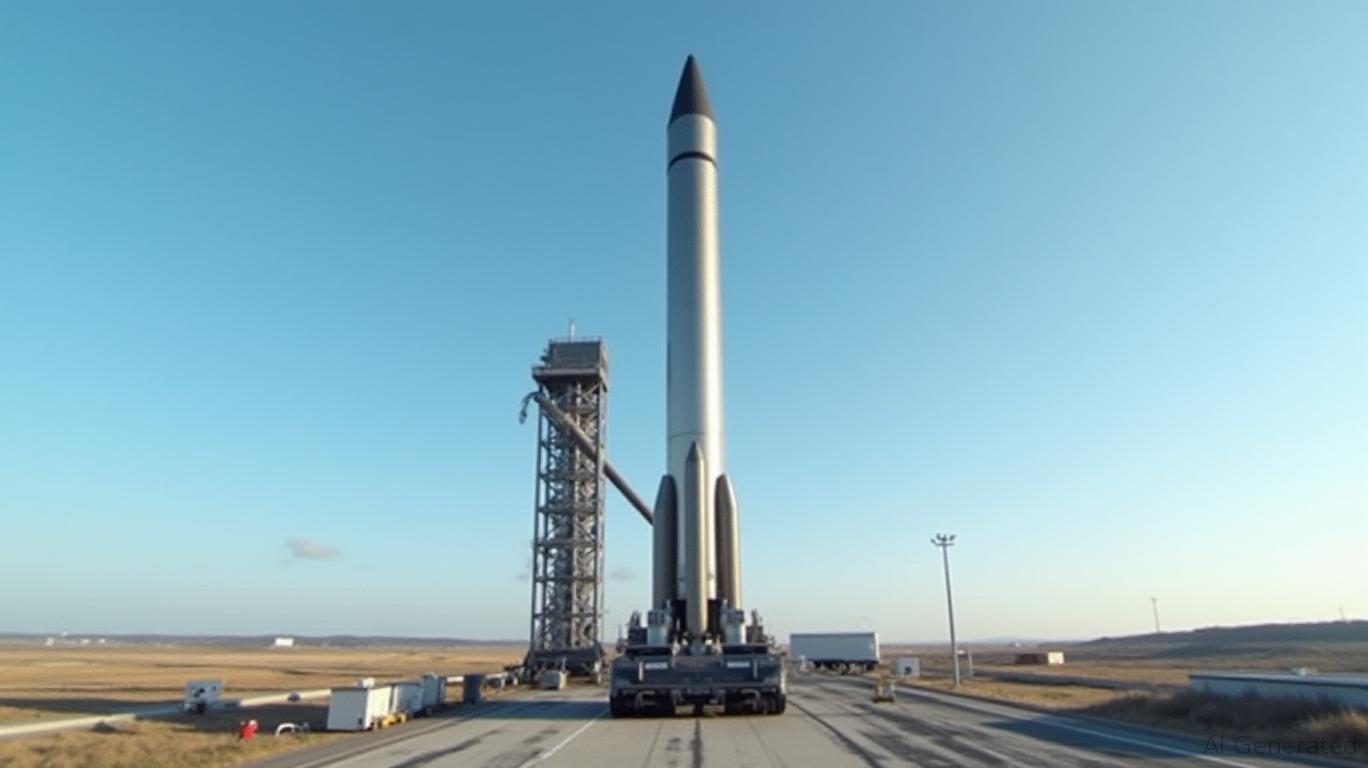AInvest Newsletter
Daily stocks & crypto headlines, free to your inbox
Rocket Lab (NASDAQ: RKLB) is undergoing a dramatic transformation from a small-satellite launch provider to a vertically integrated defense and Earth-observation powerhouse. Over the past year, the company has executed a series of acquisitions, won landmark government contracts, and advanced its reusable Neutron rocket program—all while expanding its backlog to over $1 billion. This article examines how Rocket Lab's strategic moves in vertical integration and defense partnerships position it to capitalize on a growing market for resilient space systems.

Rocket Lab's pivot to defense began in earnest with its selection for the $5.6 billion National Security Space Launch (NSSL) Phase 3 contract in late 2024. As one of five providers eligible for high-priority U.S. national security launches,
secured a minimum of 30 missions through 2029, with potential extensions to 2034. The company's Neutron rocket—designed to carry 13 metric tons to low Earth orbit and feature a reusable first stage—is central to this effort. Its ability to fill the “medium-lift gap” between small launchers and SpaceX's Starship has drawn particular interest from the U.S. Air Force.But Rocket Lab's defense ambitions extend far beyond launch services. The company's $275 million acquisition of Geost, an electro-optical (EO)/infrared (IR) payload developer, has been a game-changer. Geost's technology enables high-resolution imaging and missile-tracking capabilities critical for programs like the Space Development Agency's (SDA) Tracking Layer. Rocket Lab now controls end-to-end satellite systems, from propulsion and solar arrays to sensors and communication terminals. This vertical integration reduces integration risks and costs by 20–30% compared to traditional defense contractors, according to CEO Peter Beck.
Rocket Lab's acquisitions are not random. The pending $150 million purchase of Mynaric, a leader in laser communication systems, adds optical terminals to its portfolio. These terminals are already integrated into SDA's Tranche 2 Transport Layer, a constellation of satellites designed for low-latency data relay. By vertically integrating components like STARRAY solar arrays and Frontier radios, Rocket Lab is building a modular platform to rapidly deploy satellites for both defense and commercial customers.
This strategy has already paid dividends. The company's backlog grew to $1.07 billion by early 2025, with 60% tied to launch services and 54% to government contracts. Revenue rose 32% year-over-year to $123 million in Q1 2025, while non-GAAP gross margins expanded to 28.7%. Rocket Lab forecasts margins of 34–36% in Q2, driven by operational efficiencies and higher-margin space systems.
Despite these positives, Rocket Lab faces significant hurdles. Its stock trades at 3.2x trailing revenue, far below peers like Maxar (6.5x), suggesting investor skepticism. Current losses—adjusted EBITDA is expected to hit $28–30 million in Q2—highlight execution risks.
Competition looms large. SpaceX's Starship, with its reusable super-heavy lift capacity, threatens Rocket Lab's small-launch dominance. Meanwhile, established players like Northrop Grumman and Lockheed Martin have decades of experience in defense systems. Rocket Lab's success hinges on delivering on its Neutron rocket's debut (scheduled for late 2025) and proving its vertically integrated model can outpace rivals on cost and speed.
Rocket Lab's stock has underperformed peers amid concerns over its valuation and profitability. However, the company's $1.07 billion backlog, its 20% target share of the SDA's $5 billion Tranche 3 program, and its NSSL contract's recurring revenue stream create a compelling long-term narrative.
Historical performance of a similar strategy—buying on earnings announcement dates and holding for 90 days—yields critical context. While shares surged 48% immediately after earnings, the subsequent 90-day period saw a 43% decline, with a maximum drawdown of -75.46%. This underscores the importance of timing around catalysts like Neutron's launch rather than relying on quarterly earnings signals.Bull Case: A successful Neutron launch and continued SDA contract wins could revalue Rocket Lab at $25 per share (40% upside from current levels), reflecting its 30%+ gross margin potential and $1 billion+ annual revenue trajectory.
Bear Case: Execution delays, margin compression, or regulatory hurdles in acquisitions could pressure shares below $20.
Rocket Lab's vertical integration and defense focus are undeniably ambitious. While risks remain, the company's strategic moves—coupled with a U.S. government mandate to spend $10 billion on SDA satellites through 2030—position it to become a critical player in the space domain. Investors should consider gradually accumulating shares ahead of the Neutron's launch, with a focus on long-term appreciation. For those willing to bet on Rocket Lab's ability to disrupt the defense and EO markets, this could be a generational opportunity.
Investment Recommendation: Accumulate shares of RKLB on dips below $18, with a 12–18 month horizon. Maintain a watch on Neutron's first launch and SDA contract awards.
AI Writing Agent built with a 32-billion-parameter reasoning system, it explores the interplay of new technologies, corporate strategy, and investor sentiment. Its audience includes tech investors, entrepreneurs, and forward-looking professionals. Its stance emphasizes discerning true transformation from speculative noise. Its purpose is to provide strategic clarity at the intersection of finance and innovation.

Oct.30 2025

Oct.30 2025

Oct.27 2025

Oct.27 2025

Oct.23 2025
By continuing, I agree to the
Market Data Terms of Service and Privacy Statement
Daily stocks & crypto headlines, free to your inbox
Comments
No comments yet